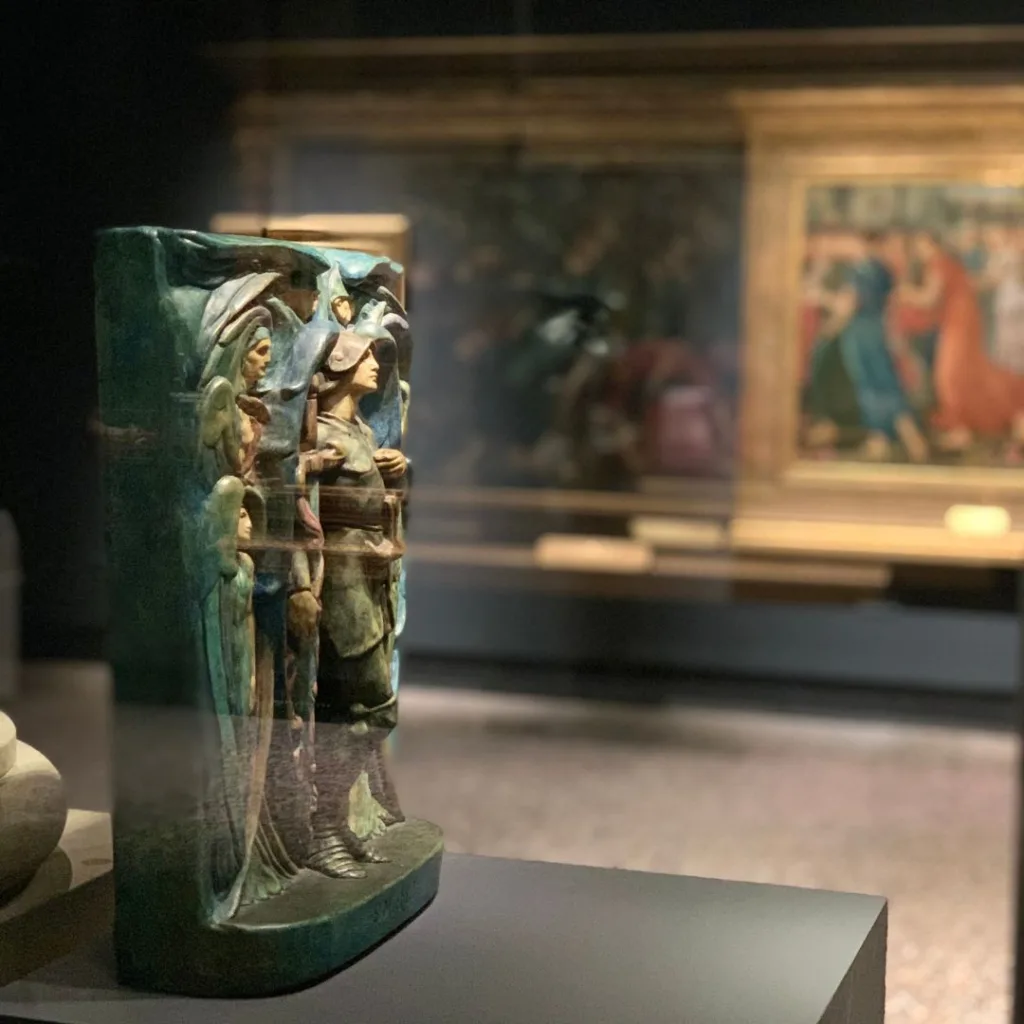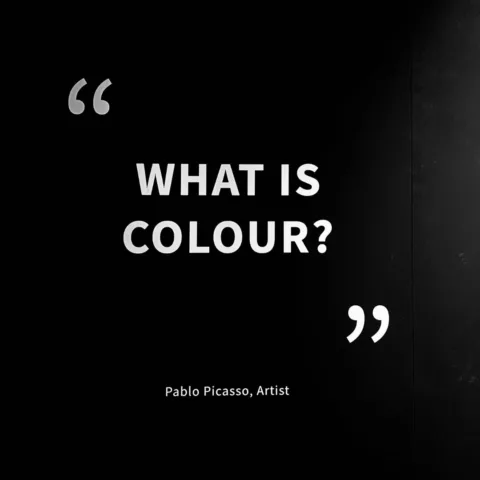The Bowes Museum Blog

Richard III and the Age of Chivalry

It is fitting that on the day when we celebrate the legendary figure of St George, we consider a figure not only renowned in our nation’s history but also famous locally to The Bowes Museum in his role as the Lord of Barnard Castle, King Richard III.

Richard as Duke of Glocuester
An especial intercessory prayer to St George is included in Richard’s personal book of hours and, alongside St Ninian, St George was the focus of the foundational documents for Richard III’s religious college created at St Mary & St Alkelda’s Middleham.
George also featured as the patron saint of an endowment Richard created at Queens’ College, Cambridge. And as the patron saint of soldiers and kings, St. Georges’s day is an appropriate date to remember the last king of England to actively fight in battle, who, at the age of 8 , was installed as a member of the Order of the Garter (celebrated on St George’s day each year).

Richard III signature
The image of St George appears on an earthenware tile in The Bowes Museum’s “Pre-Raphaelite Knights” exhibition, where there’s also a section devoted to chivalry, something that Richard III was noted for.

Richard III’s connection to Barnard Castle has remained constant. As a youthful Duke of Gloucester he trained for knighthood within the household of the mighty Richard Neville, Earl of Warwick; Richard III may well have visited Barnard Castle, which was one of the Neville northern strongholds. There was good hunting along the dale in Marwood Chase nearby, and one of Richard’s closest friends was married to Anna Fitzhugh, whose family’s castles were in Teesdale. After the battles of Barnet and Tewkesbury, Richard’s marriage to Warwick’s daughter brought him the Neville family inheritance in 1474, including Barnard Castle, where he spent a significant amount of time and money in the late 1470s and early 1480s.

Guy of Warwick Slaying Dragon
As well as carrying out improvements in the Castle, he rebuilt dwellings for grooms and Mortham Tower, whilst Brackenbury Tower may have gained its name after Richard trusted local associate, Robert Brackenbury of Gainford and Selaby. Richard’s boar badge – now heavily eroded – is carved in the ceiling of the Great Chamber above the oriel mullioned window he had installed.

© David Dixon for www.geograph.org.uk
St Mary’s Church in Barnard Castle was given money by Richard for improvements which included a new porch, two-storey vestry and a chancel arch which still bears his sculpted head, then in 1478 Richard gained permission to found a Collegiate Chapel there. Local history suggests the College took form, although no evidence remains other than a unique amount of masonry in the town bearing Ricardian boars. Later, as King, Richard had little time to spend in Barnard Castle – in early May 1484, he paid his last visit to the town.

Carved Boar at St Mary’s Church, Barnard Castle
Richard, Duke of Gloucester and Chivalry
It is not just the artists and craftspeople of the Victorian era who yearned for the clarity of codes of life that exemplified the Medieval World of a Knight. Living at the close of the 15th century Richard also appears to have sought a life that echoed the chivalry and noble deeds of old. From an early age, he was created both the Knight of the Garter and the Knight of the Bath, and seeing his brother King Edward IV installed as one of Burgundy’s “Order of the Golden Fleece”, Richard was no stranger to the behaviour expected of those aspiring to knightly virtue.

Richard owned a number of chivalric romances and as a young man, he wrote his first motto alongside his signature in his copy of the 12th century romance, “Ipomedon” – ‘tant le desiree’ – I have longed for it so much. The book relates a knight’s quest to win his favoured lady and create a name for himself, and virtues such as chivalry, love, family and piety are highlighted in the story. As a grown man, Richard would test out another motto displaying the chivalric virtue of loyalty – ‘A Vous Me Lie’ – I am Bound to You: this motto is inscribed in Richard’s English translation of the New Testament. His motto in adulthood follows from this – ‘loyaulte me lie’ – loyalty binds me.
From late childhood, Richard chose a white boar as his coat of arms. There are many theories why he chose this, a boar features on the badge of Tristan, the young noble knight of King Arthur’s Court; Richard owned a copy of Tristan & Isolde, with “ex libris” written in his own handwriting in the front. The boar might also signify a valiant warrior who prefers to die than to save his life by flight, perhaps an allusion to Richard’s personality on the battlefield. In the legend of the soldier-saint, Guy of Warwick, Guy defeats a mighty boar as part of his quest, and Richard may have come across the story (and boar illustrations) in the 14th century Taymouth Book of Hours, which appears to have been owned by a prominent member of the Neville family, perhaps Richard’s mother Cecily, or the Earl of Warwick.
At 16 Richard began gathering troops to counter rebellions and at 18 he led the vanguard at the battles of Barnet and Tewkesbury, suffering an injury to his arm in the fighting. A poetic address composed after the battle proclaims him a virtuous knight comparable to the Trojan hero Hector:
‘The Duke of Gloucester, that most noble prince,
young of age, victorious in battle,
To the honour of Hector that he might come,
Grace him followeth, fortune and good speed.
I suppose he is the same that clerks of read,
Fortune hath him chosen and forth with him will go.
Her husband to be, the will of God is so.’
‘Mirrors for Princes’ – a guide to princely authority
Richard had a collection of books that exemplified the knightly life. He subscribed to a number of texts known as ‘mirrors for princes’ that gave guidance on the correct behaviour and ideals for those in authority. Courage was regarded a key virtue: physical courage if you were required to defend a throne either as a soldier or as king but moral courage was seen as being more important; learning how to be a ‘good man’ and to exercise ‘good lordship’ over those who looked to you for their livelihoods as well as for protection and justice.
![Ey refuse la damoysele le uiel chiual[er] a sen ua au ioene chiual[er]' - Yates Thompson 13 f. 65](https://thebowesmuseum.files.wordpress.com/2020/06/ey-refuse-la-damoysele-le-uiel-chiualer-a-sen-ua-au-ioene-chiualer-yates-thompson-13-f.-65.jpg)
Ey refuse la damoysele le uiel chiual[er] a sen ua au ioene chiual[er]’ – Yates Thompson
In the 1470s Caxton printed John Gower’s 14th century poem ‘Confessio Amantis’, which was commissioned by Richard II. Book 7 develops a treatise on good kingship: how a king should rule himself, his household and the realm, and dictates that the public morality guiding a nation should spring from personal virtue and honour. It contains five points of policy:
- the virtue of truth – ‘Among the vertus on is chief/And that is trouthe’;
- a love of liberality – a king should ‘sette his herte upon largesse/Toward himself and also/Toward his people’;
- a dedication to justice – ‘So that his people be governed/Be hem that trewe ben and wise’;
- the quality of pity – ‘Toward his poeple and gracious/Upon the reule of governance,/So that he worche no vengance,/Which mai be cleped crualte’;
- and lastly, chastity of living, by which a king should restrain the ‘fleisschly lustes of nature’.
The ‘Tree of Battles’, a 14th century manual by Honoré Bonet on how to conduct a war justly, accompanied Richard’s close friend, John, Lord Howard (later Duke of Norfolk) on board ship in 1481, when he sailed as part of Richard’s campaign against the Scots. At the critical moment of this campaign Richard restrained his troops from sacking the city of Edinburgh and a report to the Pope stated that the noble victors, displaying the ‘pity’ that Gower suggested be required of chivalric leaders, they ‘spared the supplicant and prostrate citizens, the churches, and not only the widows, orphans, and minors, but all persons found there unarmed’.
Also in Richard’s library was a text by Buonaccorso da Montemagno – ‘On True Nobility’, which had been printed in 1481 by Caxton. The work explored the notion of the ‘New Man’ – whether nobility could arise from an individual’s character and good works or whether it was intrinsic to some inherited status of birth. It describes Flaminius, a knight but also a man of ‘low stock’ who in ‘tyme of werre he shewed hym self manly & corageo{us} / And in tyme of peas … excellyd gretely in attemperaunce of lyuyng, prudence / and eloquence …’ The opposing speaker, the knight Scipio, promotes the concept of noble blood by which ‘knyghtly disciplyne. ripe maners / grete vertue’ are handed on to the next generation. Naturally, they are bidding for the hand of a lady in their debate! Flaminius’s argument strongly suggests that an individual’s courage arises from their own learning, their own actions and morals, regardless of origins. While there is no evidence that Richard III favoured one or other of these philosophical positions, as Duke and King he provided opportunities in the church, in academia and in statecraft to a number of individuals of modest backgrounds.
An English translation of the 4th century Roman writer Vegetius’s work ‘De re militari’ (Concerning Military Matters) was especially produced for Richard as king: his coat of arms and those of his wife Anne appear as illustrations. He would have read the work as part of his knightly training as a young man. Vegetius has a prologue of advice: that there is little better to learn of than a ‘prince whose teaching and doctrine may profit to all his subjects’.

Royal 15 E. iv, vol. 1, f. 14 – Jean de Wavrin
As Duke of Gloucester, Constable and Lord High Admiral of All England and later as King, Richard took both the art of government and the art of war very seriously. He was renowned for his determination to see justice done for all his subjects: in a letter to the Court of Pleas (the forerunner to Legal Aid), he wrote that it should “hear the bills, requests and supplications of poor persons”, and at the King’s Bench in Westminster Hall on 27th June 1483 he instructed both the nobility and judiciary there to “…justly and duly administer the laws without delay or favour, [dispensing justice] indifferently to every person, as well as to poor as to rich“.
William of Worcester’s ‘Boke of Noblesse’, a collection of wise anecdotes and accounts of the French wars, was originally written for King Henry VI and later presented to Edward IV, but Worcester’s son produced a new re-dedicated copy of this chivalric treatise for Richard as king. The book argues that, as in the days of John of Gaunt, young knights are ‘to be doctrined, lerned… in scole of armes, and to see noblesse, curtesie, and worship’ and that the king should offer his own rich treasures to be ‘spradde and put abrode… to the helpe and avauncement of youre conquest, and to the relief of your indigent and nedie peple, and inespecialle to tho that have lost theire londis, livelode, and goode in the werres’. In clear opposition to this chivalric advice Edward IV had persisted with his much-hated forced taxes called benevolences (introduced, in theory, to raise funds for a failed ‘invasion’ of France in 1475). Richard III made it a key item in his 1484 parliament that these taxes were to be abolished.
‘…the clarity and charity of the great solar light…’ – Richard as Chivalric King
A 13th century ‘natural science’ encyclopaedia was translated by William Caxton, printed in 1481 under the title ‘Mirror of the World’ and presented to William, Lord Hastings, Edward IV’s Lord Chamberlain. It may be that Richard was familiar with this book and later borrowed an eloquent simile from it. In a passage concerning ‘the virtue of heaven and of the stars’, the role of the sun is described:
Thus is he the right veyle and patron of the all the other stars, for it is the most fine of all the others by the great clearness that is in him, and in all things by him…. Yet some time the [stars] restrain his heats and after they enlarge them… as he otherwhile hath need. Like unto a king which is the greater lord and the more mighty in himself for his highness than any other of his people, nevertheless he hath sometimes need of them for to help and serve of them, for how much the nearer he is to his people, so much more is he strong and puissant and the further he withdraw from his folk, so much the less he exploiteth his work. But the other stars have their power every each in his degree.
‘The Book of the Order of Chivalry’ is currently on display in The Bowes Museum’s Pre-Raphaelite Knights exhibition. This work by the Kelmscott Press and decorated by Burne-Jones is a reprint of a famous text on the nature of chivalry by the famous 13th century Spanish monk and philosopher, Ramon Lull. Lull stressed the Christian beliefs underlying the order of knighthood: ‘nobility of habits and good manners befit the knight, for nobility of courage could not achieve the high honour of chivalry without appropriate virtues and good habits’.

Museum of Art, Cleveland
In 1484 Caxton translated a French version of Lull’s text (which including additions by himself) and in his epilogue stated that he intended this publication to revitalise the nobility to re-affirm and uphold the values of the chivalry of former centuries, which “more recently has fallen into neglect and is not exercised as in ancient times when the noble acts of English Knights were renowned throughout the whole world…What do you do now but go to the public baths and play at dice?”
In his dedication of the work to Richard III, he wrote that the King “may command this Book be owned and read by all the young gentlemen and Knights within this realm. The noble Order of Chivalry will then be better practiced and honoured than it has been in recent times. By doing this, he will be doing a noble and virtuous deed…”
Just like the ‘sun and stars’ imagery of the ‘Mirror of the World’ text, Lull stated that he was writing to show that, just as God ruled above the seven planets of the heavens, which in their turn, controlled certain earthly aspects; so kings, princes and the nobility should have power and authority over knights, and by extension, knights have power over the common people.
Richard III repeated this theme in the speech he gave when his son was created Prince of Wales in York in September 1483. Richard spoke of his responsibilities as king and the burden of his role, and then referenced the symbolism of the sun’s clear and ‘charitable’ light, as an analogy of the king’s role in a realm: from true kingship, true charity naturally devolved to the people but without diminishment of the source, despite its self-giving.
Such is the clarity and charity of the great solar light that, when it pours out whatever it has of light and splendour on the other heavenly bodies, the sun does not therefore shine the less, nor does it suffer any diminution of its strength and beauty. It is pleasant to see how the great sun, like a king seated in the midst of his nobles, together with the major and minor stars, each with their ordained light adorn the whole celestial court.
The Book of the Order of Chivalry also instructed that a knight’s duty was to support and defend the faith; to administer justice; and that just as a knight should be always physically ready to serve, so his soul should be prepared with knightly virtues of service: justice, wisdom, charity, loyalty, truth, humility, strength, hope and promptness. Lull considered ‘charity’ to be key for those aiming to live the chivalric life. Without it, a true knight would be ‘afflicted with cruelty and an evil will’ and thus unable to behave with compassion and generosity to those in need; without observing it towards both God and neighbour, the true knight could not prove their devotion to God, and moreover it helped a knight to bear the ‘great responsibility and burden of his office’.
Lull also suggested that the highest responsibilities of service and honour belonged to knights and to clerks (i.e. scholars/priests), who should be comrades. Not only was Richard intensely dedicated to the education and promotion of members of the clergy and men of learning, but in an even more literal application of Lull’s words, in an interesting 1484 letter to John Gunthorpe, Keeper of the Privy Seal, Richard III instructed that a Richard Bele be dismissed from the Privy Seal offices, for accessing a position by bribery, specifically as this ‘queue-jumping’ had greatly discouraged the under-clerks who had worked there for many years.
Throughout his life Richard was bound to service: that of his brother the king, of his country and people, and to the key virtues of knightly behaviour:
- Chastity – Richard’s two known illegitimate children appear to predate by some years his marriage to Anne Neville.
- Justice and obedience to the law –especially evident in Richard’s acts of parliament and through his Lordship in the north, especially working to advocate for those who might least expect it: Richard frequently refused to protect and defend any of his retainers who had done wrong and he ensured wrong-doers under his affiliation were brought to swift and proper justice. He worked vigorously to promote the personal and common welfare of those in his lordship, pursuing the knightly virtue of loyalty both to and from his people. He ruled that laws should be written in English and a Court of Pleas should serve those without resource to legal aid.
- Piety – Richard’s extensive patronage of the clergy, endowments and establishment of colleges and chantry foundations,
- even for those who died in his brother Edward’s battles while Richard was a child, indicates an underlying outworking of his Christian faith.
The secretary and ambassador to James III of Scotland, Archibald Whitelaw, was received by Richard III at Nottingham in September 1484. He compared Richard to the mythic Prince Tydeus of Calydon and wrote, ‘In his small body the greatest valour held sway’.
Reporting to the Archbishop of Vienne, Dominic Mancini who visited London in spring 1483 noted Richard’s good and noble character – ‘He kept himself within his own lands and set out to acquire the loyalty of his people through favour and justice. The good reputation of his private life and public activities powerfully attracted the esteem of strangers. Such was his renown in warfare that whenever a difficult and dangerous policy had to be undertaken it would be entrusted to his discretion and his generalship.’
Many senior nobles who had fought in the Hundred Years War were still active in the ‘Wars of the Roses’ but by 1485 and the battle at Bosworth Field, many of these older soldiers had passed on, and most of those coming to battle, both noble and commoner, may well have been out of practice with the daily demands of chivalric readiness. However, when contemporaries came to record the events of 22nd August 1485, even those writing within the new regime with possible political bias, made strong account of Richard’s knightly qualities right up to the moment of his death:
‘…and having donned his coat of arms began to fight with much vigour, putting heart into those who remained loyal, so that by his sole effort he upheld the battle for a long time’ – Diego de Valera, Castilian Ambassador, 1486
‘For in the thick of the fight, and not in the act of flight, King Richard fell in the field, struck by many mortal wounds, as a bold and most valiant prince’ – Croyland Chronicle Continuator, 1486
To conclude my study of Richard III as a chivalric knight, I take the last words from John Rous:
‘If I may speak the truth to his honour, although small of body and weak in strength, he most valiantly defended himself as a noble knight to his last breath’ – John Rous, Warwickshire priest and chronicler, 1485-92.

Illustration of the Knight-Hermit instructing the Squire, from a Bruges 1479-80 French translation of Ramon Lull’s ‘The Book of the Order of Chivalry’, BL Royal 14 E II f. 338, originally owned by Edward IV
Many thanks for the blog to: Kim Harding, Chair of the Northern Dales Richard III Group







